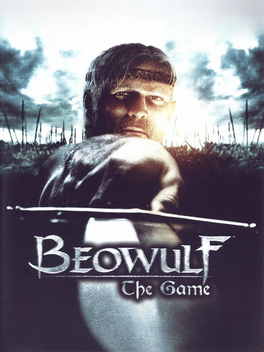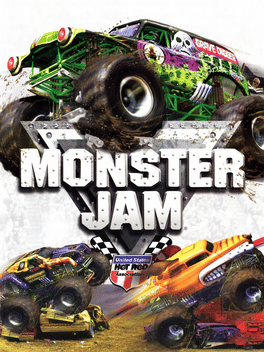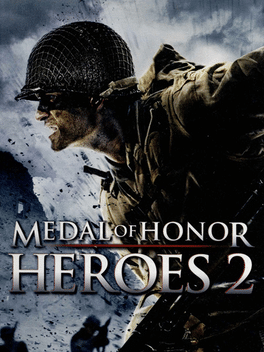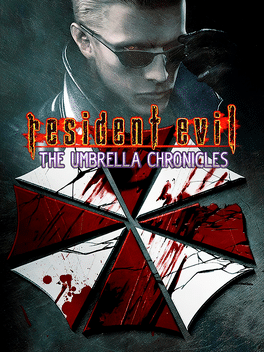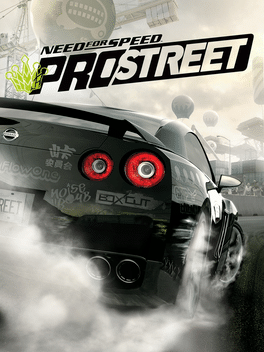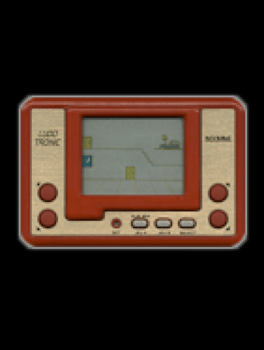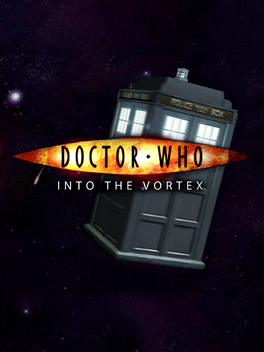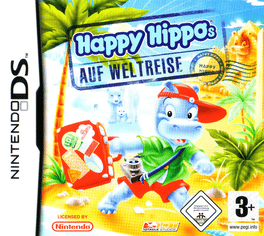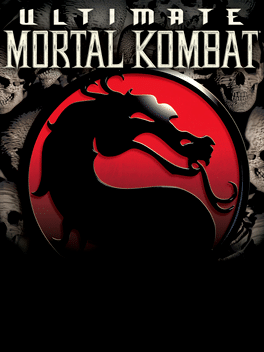New Games - Page 10055
-
Beowulf: The Game
2007
Beowulf: The Game
2007
star 5.7Beowulf: The Game is a hack and slash game for TOD and consoles, based on Robert Zemeckis' version of the poem Beowulf. The game was announced by Ubisoft on 22 May 2007 during its Ubidays event in Paris.[5] It was released on November 13, 2007 in the United States. The characters are voiced by the original actors who starred in the film. -
Smarty Pants
2007
Smarty Pants
2007
How smart are you? Do you know more than your Grandma about world history? Does your little sister know more than your Dad about sports? Find out in Smarty Pants! Smarty Pants finally levels the playing field for people of all ages, allowing simultaneous play using age-targeted trivia plus action-based gestures, making it a truly trans-generational game made exclusively for the Wii. Tailoring questions to the contestant's age, gamers from eight to eighty can join in on the fun all at the same time. Exciting Wii gestures make everything a game, from spinning the category wheel and tug-of-wars over correct answers, to "dance-offs" for additional points. With both competitive and collaborative game modes and 20,000 questions in multiple categories, the fun is virtually endless! -
Monster Jam
2007
Monster Jam
2007
star 3.4Monster Jam Battlegrounds brings the ever popular touring show straight to the fans with roaring engines and crushing action. Not only does this game replicate the world renowned Monster Jam stadium and arena events, but it also takes fans out of the stadium and into other environments for physics based skill and stunt challenges. -
Jenga World Tour
2007
Jenga World Tour
2007
star 3.3Jenga, a famous license for family and friends, is the unpredictable, quick playing, tactical game that combines suspense and risk-taking, where mounting anticipation comes to a crashing climax. With sophisticated physics, intuitive console controls and a multitude of play options (single and multiplayer) Jenga World Tour contains all the fun of the class IP play with a wealth of possible modifications, power - ups and twists that are only possible in videogame. -
Soldier of Fortune: Payback
2007
star 3.8Soldier of Fortune: Payback is a first-person shooter video game and the third installment of the Soldier of Fortune game series. Unlike the previous two Soldier of Fortune games, which were developed by Raven Software utilizing the Quake 2 and Quake 3 engines, Payback was developed by Cauldron HQ, developed with Cauldron's in-house CloakNT engine, used in their previous first person shooter game, Chaser. It is the first game of the series released for the Xbox 360 and PlayStation 3. The game was released on 14 November 2007. -
Cooking Mama 2: Dinner With Friends
2007
star 7.3As in the original The Cooking Mama, players in The Cooking Mama 2: Dinner with Friends, prepare various culinary dishes using the Nintendo DS's touch screen. Following the on-screen instructions of the titular "Mama", the player uses the stylus to perform various activities such as chopping vegetables or mixing ingredients. Each of these tasks is performed by completing a short minigame, with a number of minigames strung together to form an entire dish from a catalog of 80 different recipes. After completing a dish, the player's cooking performance is evaluated and given a numerical score (out of 100) along with a corresponding medal. Failing to accomplish a step in Let's Cook mode or getting a "fail" within steps (in various ranges), the player will receive a "Broken Silver" medal, in which the medal is similar to that of the Silver medal with an addition: a crack. Unlike in previous Cooking Mama titles, bonuses earned during minigames do not influence the overall score, but instead accumulate as "bonus stars". -
Rayman Raving Rabbids 2
2007
star 6.2They've invaded the world of Rayman, and now the insane Rabbids have a new objective: invade planet Earth! They have established their base at a shopping mall and begun training for their nastiest scheme yet. As part of this training, the Rabbids must carry out several missions around the globe to help them in an attempt to dominate the world. The Rabbids will also try to study human behavior by mimicking everything we do... but in the Rabbid sort of way, with no logic... of course. -
SimCity Societies
2007
SimCity Societies
2007
star 6.6Featuring an all-new, revolutionary feature set, SimCity Societies allows players to create their own kinds of cities, shape their cultures, societal behaviors and environments. Build an artistic city, an Orwellian city, futuristic city, green city, spiritual community or any society you want! With more accessible and innovative choices than before, SimCity Societies is the most versatile city building game. -
Medal of Honor: Heroes 2
2007
star 6.7Medal of Honor Heroes 2 is a first-person shooter game for the Wii and the PlayStation Portable. It is the 12th installment in the long-running Medal of Honor series of World War II games. Each version was built from the ground up for its respective system. The Wii version was announced at Nintendo's E3 2007 Press Conference on July 11, 2007. It may not be sold to people under 18 in Germany because of its USK rating. Medal of Honor: Heroes 2 is set in World War II, starting on the Normandy beaches trying to control German bunkers and then move on to secure a village somewhere in France. This is the second Medal of Honor game to be released for the Wii. The first was Medal of Honor: Vanguard. -
Resident Evil: The Umbrella Chronicles
2007
star 6.8Resident Evil: The Umbrella Chronicles is the first natively developed for the Wii console. Unlike the other games focused on free exploration, this title is an on-rails shooting game with fixed movement and perspectives. While playing, the camera floats to different areas and players shoot enemies on the screen, picking up ammo, weapons and health kits in the progress. In some situations, the controller can also be used as a melee weapon or in timed sequences. Some levels feature multiple paths and there are regular checkpoints. At the end of a level, the player's performance is awarded by stars, which can be exchanged for weapon upgrades. The game supports the Wii Zapper and features cooperative gameplay for up to two players. -
Crysis
2007
Crysis
2007
star 8.2From the makers of Far Cry, Crysis offers FPS fans the best-looking, most highly-evolving gameplay, requiring the player to use adaptive tactics and total customization of weapons and armor to survive in dynamic, hostile environments including Zero-G. -
Assassin's Creed
2007
Assassin's Creed
2007
star 7.6Assassin's Creed is a non-linear action-adventure video game, during which the player controls a 12th-century Levantine Assassin named Altaïr Ibn-La'Ahad during the Third Crusade, whose life is experienced through the Animus by his 21st century descendant, Desmond Miles. -
Need for Speed: ProStreet
2007
star 6.4Compete at the highest level of street racing with Need for Speed ProStreet. It’s no longer good enough to simply rule your local neighborhood; you need to dominate on a global stage. Build the ultimate battle machine, take it to multi-disciplinary showdowns and pit your skills and reputation against the world’s best street racers. -
Sleep Walker
2007
-
Doctor Who: Into the Vortex
2007
Fly the TARDIS. How far can you travel in time? Control the TARDIS as you travel through the time vortex. Collect blue energy particles to temporarily fuel the TARDIS and avoid red particles that will disrupt the fuel cells. If you lose all your energy, the TARDIS will fall out of the vortex and rematerialise at a location in space and time. -
Are You Smarter Than a 5th Grader?
2007
Class is in session—how much have you forgotten since grammar school? Step up to the podium and put your smarts on the line to see if you’re smarter than a 5th grader! Enjoy game show excitement—just like the show, from the classmates’ peer pressure, to Jeff Foxworthy’s wisecracks. Test your knowledge with 28 tough grade school subjects with over 3,000 challenging questions, which you can answer with help from your 5 classmates. -
Check Mii Out Channel
2007
Check Mii Out Channel was a Wii Channel that allows Wii users to enter their Mii caricatures in online contests, as well as share them with the rest of the world. There are two components to the Check Mii Out Channel; the Posting Plaza and the "Contest section". -
Happy Hippo's World Tour
2007
The Happy Hippos - characters based on the collection figure series known from Ferrero's Kinder Surprise - want to explore the world in order to help out their friend, a painter who has lost his inspiration. They are looking for interesting scenes, the inhabitants of foreign regions and valuable treasures. Every scene is filled with information referring real existing locations, which has been taken from "Brockhaus" encyclopedia for children. The Happy Hippos game is a classic 2D Platform Jump'n'Run where three friends explore the Polar Region, Egypt and the Caribbean.The game consists of 14 levels including a variety of minigames like a squid rodeo, a snowball fight and a treasure hunt. Licensed title based on the collection figure series from Ferrero's Kinder Surprise. The PC version of the game has additional decorative elements in order to fill the unused 4:3 screen space. -
Ultimate Mortal Kombat
2007
star 6.9Ultimate Mortal Kombat combines the visceral thrills of the classic "Ultimate Mortal Kombat 3" and the addictive puzzle action of the Puzzle Kombat component of Midway's best-selling "Mortal Kombat: Deception" in a single DS-friendly package. With new record-keeping capability, and Nintendo Wi-Fi Connection multiplayer, players can take UMK anywhere for fighting action on the go.

